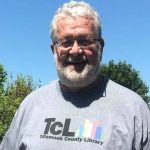 By Neal Lemery
By Neal Lemery
A friend asked me the other day what they might do to help the community. They wondered if we had significant poverty and other social issues. I told them to take a good look around and become aware of what seems so obvious to many of us. I researched some alarming statistics, which are likely outdated, understated, and under-reported. These numbers paint a disturbing picture and are a call to action.
Oregon State University and the Ford Family Foundation have assembled an insightful look at where our county is at in terms of our well-being, health, and educational needs. https://www.tfff.org/wp-content/uploads/Tillamook-CountyProfiles-2024.pdf
- 46% of our households experience financial hardship (12% live below the federal poverty line, 34% below the Asset Limited, Income Restrained, but Employed (ALICE), which means they don’t have enough income for their basic needs). That 46% compares to 29% nationally.
- 11% of the population has food insecurity.17% of our kids live in poverty.
- 33% of our population has a third grade reading level or less; 21% have a fifth grade math level or less.
- We pay more property taxes ($2,296 per person) than the state average of $1,862.
- Our two-year-old kids have only a 56% vaccination rate (Oregon has a 68% rate).
- Our mental health providers have a ratio of 317 people per provider, but Oregon’s ratio is 148 people per provider.
- We live in a “child care desert” with 7.9 providers per 100 kids. The state ratio is 18.4 providers per 100 kids.
With the oncoming cuts in SNAP benefits and Medicaid (the Oregon Health Plan), these local statistics and the impact on our neighbors and our community will only become more challenging. There is talk about not keeping local hospitals and clinics open, and cutting food programs in schools.
What my friend can do, and what we can all do, is become better informed, and more involved in organizations that are taking on the social issues that these statistics mean to all of us. We all know people who are working in the professions that deal with the problems associated with poverty, education, health care, food supply, and the needs of kids. Their knowledge, their experiences, and their passion for service and care of others are tremendous assets to the community.
We need more conversations, more engagement by all of us in these issues. We need to be better informed, not only on the issues that these numbers represent, but how we can collectively address these problems, learn about solutions and how to become engaged in being our community problem solvers.
These numbers, and the daily struggle and challenge our community members have, are a call to action. We need to have difficult conversations, and be the cause of “good trouble” as John Lewis famously said.
As Margaret Meade said, “Never doubt that a small group of thoughtful committed individuals can change the world. In fact, it’s the only thing that ever has.”
Here’s a listing of the nearly 100 nonprofit organizations doing the work in our community to help change these numbers:
Giving Guide 2024-25 – Final for Web


